5 myths debunked about Rhodesian Ridgebacks and lions

But can Rhodesian Ridgeback actually capture, take down, and kill the king of the African jungle, the mighty, ferocious lion? The answer may surprise you.

There is no doubt that a Rhodesian Ridgeback is a large and powerful breed capable of great speed and athleticism. They are also loyal, protective, and intimidating when the situation calls for it. But can they actually capture, take down, and kill the king of the African jungle, the mighty, ferocious lion?
Despite their size, power, and protective spirit the Rhodesian Ridgeback is highly unlikely to be able to kill a lion. They also, despite reports to the contrary, have never been used to do so.
So why has the Rhodesian Ridgeback gained a reputation of a lion hunting dog?
The first reason that the Rhodesian Ridgeback has gained a reputation as a lion killer is probably due to the name they were originally given which was ‘lion dog’. This name alone, gives the idea that they were indeed used to take on lions.
The second reason that the Rhodesian Ridgeback has developed the reputation of a lion killer is nothing more than the perpetuation of myth. We, humans, are very good at grabbing hold of something that we hear and passing it off as fact. This then spreads and before we know it the ‘untruth’ has become the ‘truth’!
You would think that, by this day and age, myths like this one would have been dispelled, and that people would know that the Rhodesian Ridgeback as a killer of lions has been debunked. However, type Rhodesian Ridgeback lion killer’ into Google and you will come up with many threads, sites, and videos that are not helping, or are still asking if it’s the truth.
So what is the history and the truth of the Rhodesian Ridgeback, the lion hunting dog**?**
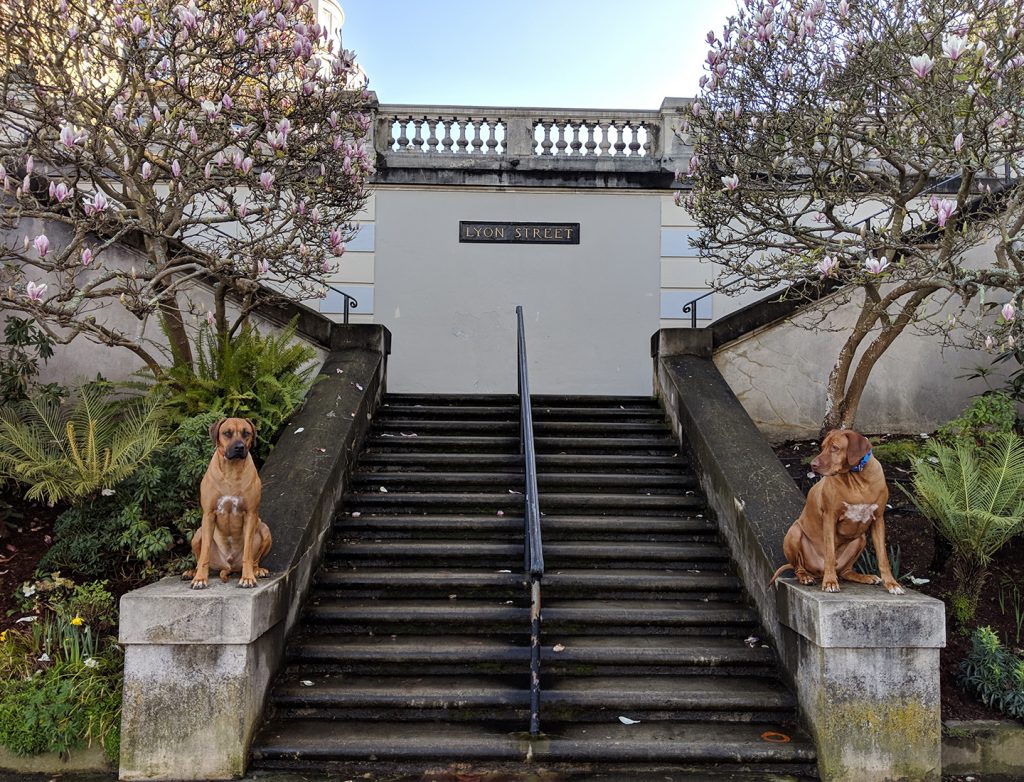
The origins of the Rhodesian Ridgebacks’ ancestors are unclear with both Asian areas and African areas having evidence of hounds that resembled them. Egyptian tombs from around 4000 BC, for example, displayed a painting of hounds with drooped ears and distinctive ridges on their back. Whilst near Rasape, in Zimbabwe, a cave painting was found displaying the burial preparations for a chief. This showed all his favorite possessions including cattle, sheep, and his hunting dogs, the Hottentot.
The Hottentot hunting dog was used by the Hottentot tribe of Africa and discovered by the European Boer settlers who arrived in South Africa in the 16th century. The Boers had brought their own breeds of dog with them including the Mastiff, Great Dane, Bloodhound, Pointer, Staghound, and Greyhound. However, they found that these breeds of a dog did not adjust well to the temperatures of Southern Africa and were looking to breed them with their African counterparts.
The Hottentot hunting hound was chosen for this purpose and through breeding them with their European counterparts the Rhodesian Ridgeback was created. This new breed was able to hunt by sight and sound, were devoted protectors, and could withstand the hot and cold temperatures that Africa had to offer. They were used to flush partridge, take down injured stags, and guard farms from prowlers at night.
In the 1870s several of these dogs were taken to Rhodesia for the purpose of hunting lions. They were not, however, expected to, nor did they kill lions. Rather, they were used to chase, harass, and corner lions until the human hunters could get to them and shoot them. The Rhodesian Ridgeback became so good at this that they were given the name ‘lion dog.’
By the 1920s there were so many variants of the Rhodesian Ridgeback that a meeting was held to elucidate the most desirable traits of the breed. The decisions made at this meeting would become the ‘breed standard’ and are pretty much unchanged today. The name was also changed from ‘lion dog’ to Rhodesian Ridgeback in an attempt to stop them from sounding so savage.
Nowadays, the Rhodesian Ridgeback is to be found in the hound group of the American Kennel Club, and in the top forty most popular breeds of the year, repeatedly, according to them. They are certainly, now more than ever, a popular breed chosen to be a family pet. This is due to their attractive looks, fantastic personalities, and absolute loyalty.
Surprisingly, for this absolutely stunning breed, a Rhodesian Ridgeback has not ever won in the prestigious show Crufts! They are, however, the national dog of South Africa and are shown on the kennel Union of South Africa’s emblem.
Are Rhodesian Ridgebacks still hunters?
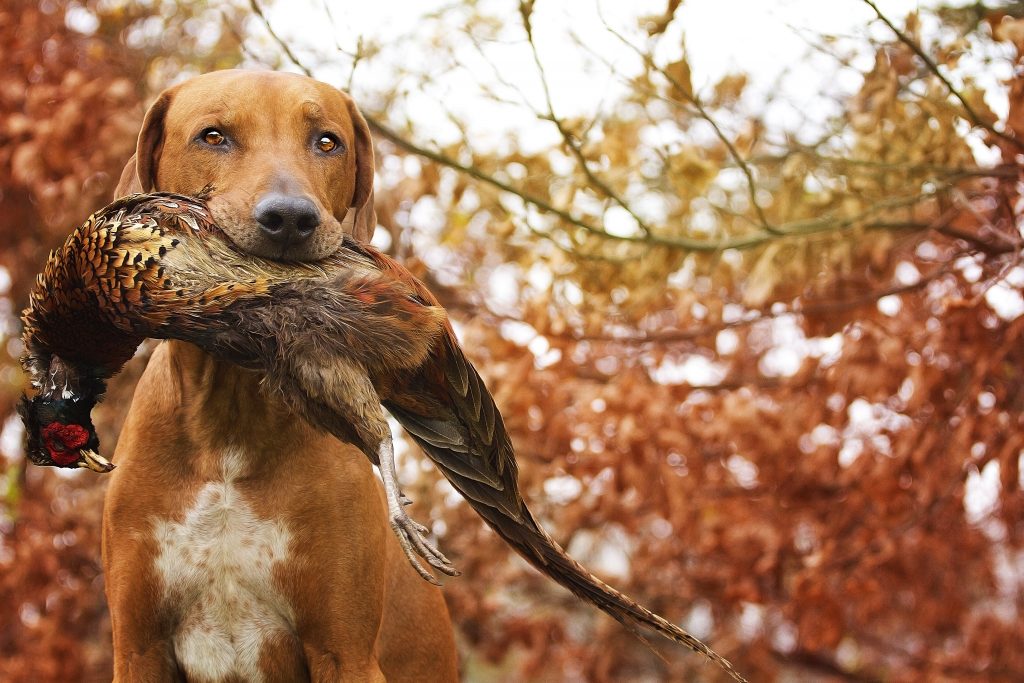
Undoubtedly there will still be many Rhodesian Ridgebacks that are being used as working dogs. This is probably especially true of African countries where the threat of predators preying upon farmers’ livestock remains the same. However, the Rhodesian Ridgeback has developed into far more than just a guard dog, it has also been welcomed into many people’s homes as a pet, and part of the family.
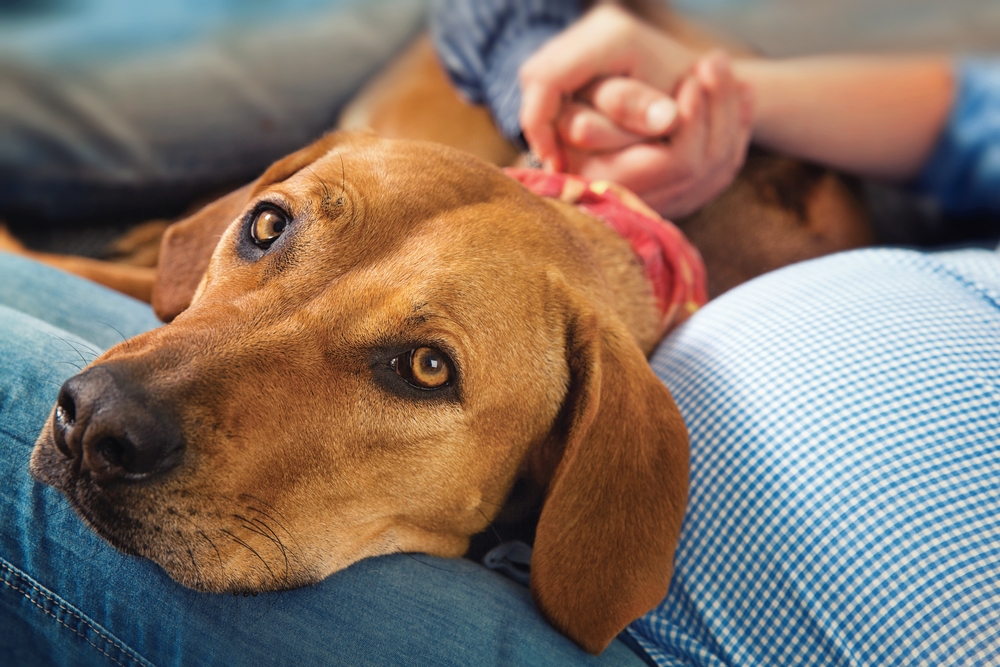
Since the Rhodesian Ridgeback has now been kept as a pet, rather than a working dog, for approximately a hundred years it would be understandable to think that the hunting instinct would have become extinct in this breed. However, that is not strictly the truth. Whilst the hunting gene may have lessened in the Rhodesian Ridgeback over time, it is still there. Of course, this will be to varying degrees throughout the breed with no particular specimen being the same.
The hunting gene or prey drive as it is commonly known, in the Rhodesian Ridgeback may cause them to chase other animals such as squirrels, rabbits, birds, mice, and even other domesticated pets such as dogs and cats. This can, however, be controlled with training and by socializing your Rhodesian Ridgeback at a young age.
Are Rhodesian Ridgebacks still good guard dogs?
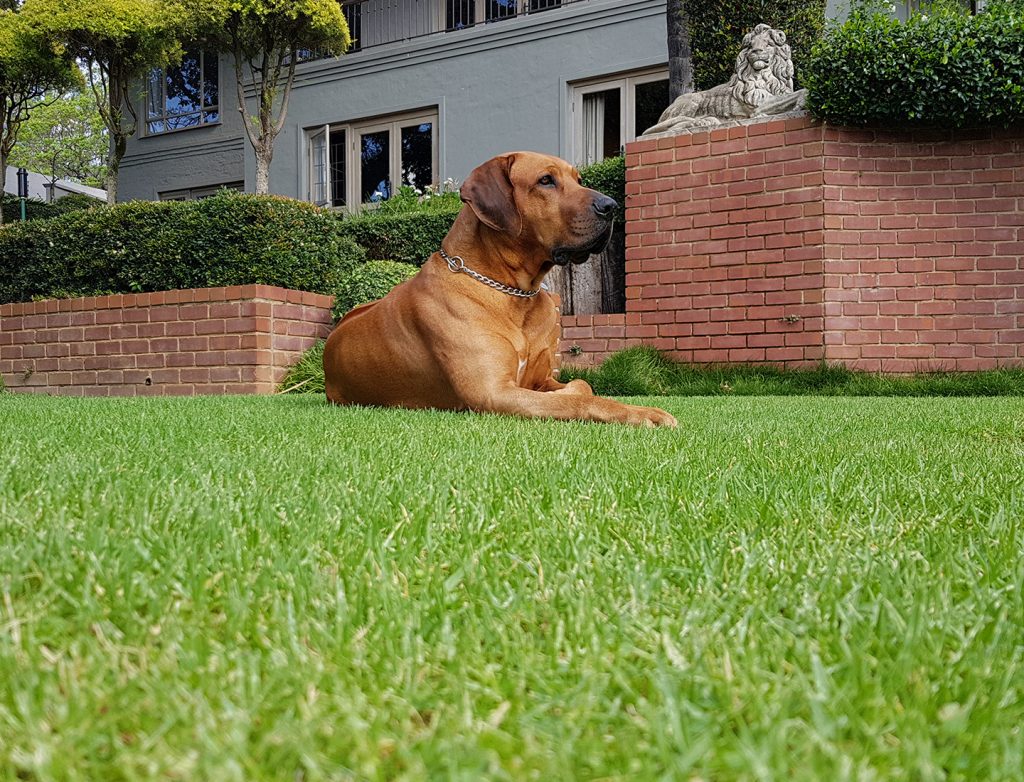
Indeed they are, in fact, one of the best! I challenge you to find any list on the internet which discusses good guard dogs and does not include the fantastic Rhodesian Ridgeback. They are invariably always in the top ten.
Pretty much like the prey drive which still exists within the Rhodesian Ridgeback, the protection gene is still there too. They are naturally inclined to protect their family and also their homestead too. They do this intrinsically by growling, barking, and placing themselves between their family and the threat.
At 25 to 27 inches tall and weighing around 70 to 85 pounds the Rhodesian Ridgeback is an intimidating sight when protecting those they love. However, they are not naturally aggressive and will not be inclined to bite. Rhodesian Ridgebacks mainly rely on their muscular powerful appearance and intimidating stance to warn predators away.
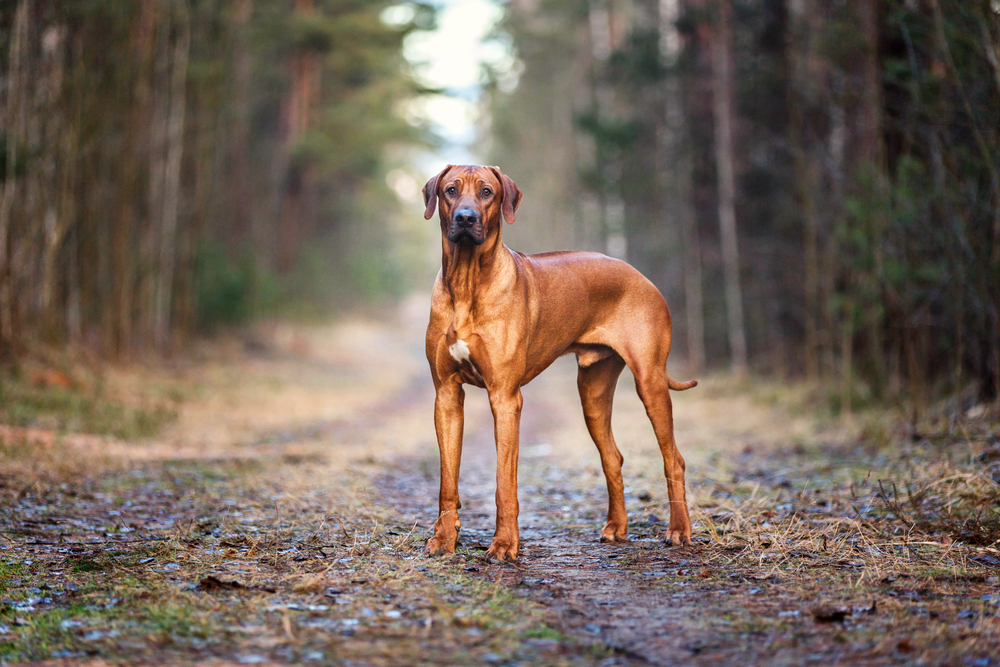
Unlike many breeds, the Rhodesian Ridgeback will not benefit from specialist guard dog training as this can encourage them to become over-aggressive. Rather, they should be subjected to all-round training and socialization when they are young. Failure to provide this may result in your Rhodesian Ridgeback becoming standoffish with people and protective when not needed. Read this article to find out more.
It is important to remember that a good guard dog does not equate to an aggressive or vicious dog. Indeed, you do not want your Rhodesian Ridgeback to cause bodily harm to someone or another animal. Rather, you want them to warn the threat off in a non-violent manner causing whatever the threat is to retreat.
What kind of training should I offer?
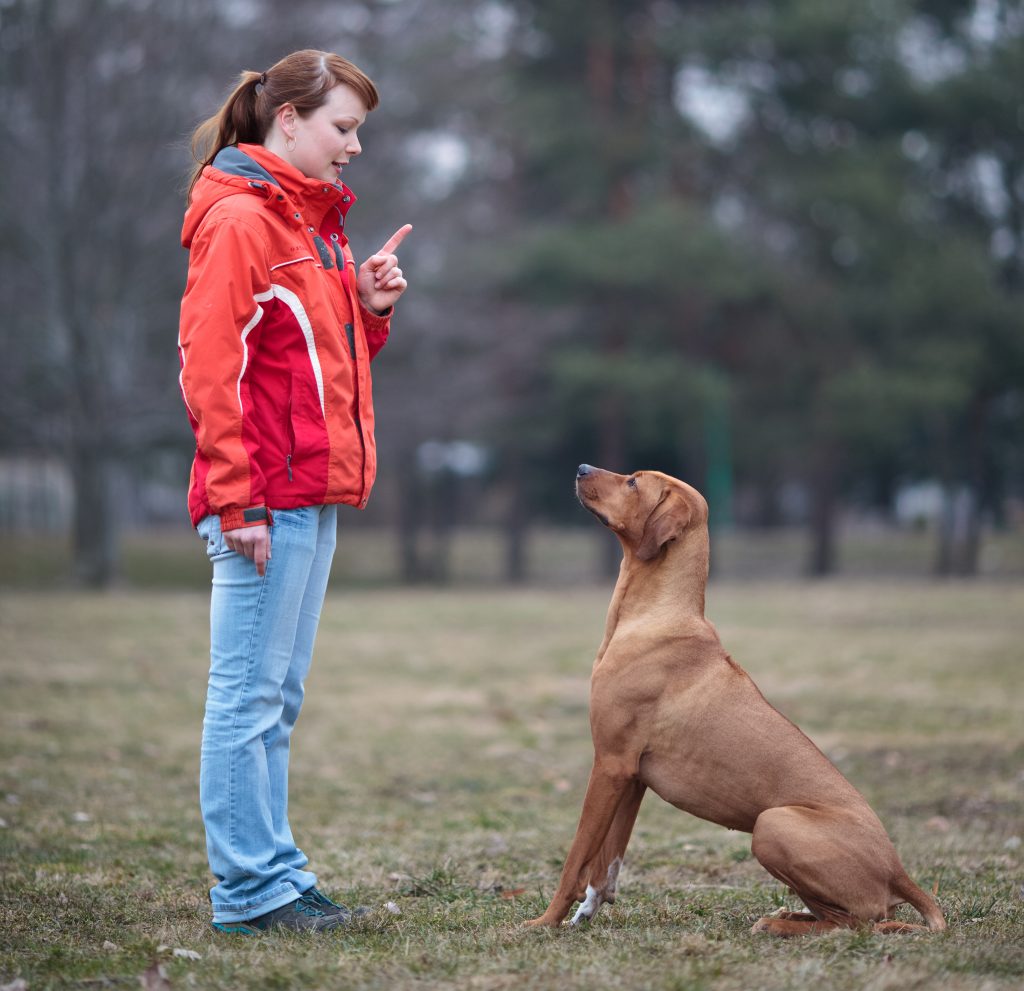
Basic training should be offered to your Rhodesian Ridgeback which includes things like safety commands, walking on a lead, and any rules you may wish to impose. For example, whilst some people allow their dogs onto the furniture, others do not, and this needs to be taught to your dog as behavior that is not acceptable. Dogs are not born naturally knowing these things and have the need to be guided.
Some breeds also need concentration in certain areas of training as they have a tendency to struggle with them. For the Rhodesian Ridgeback, this is socialization and prey drive since they have a tendency to be standoffish with strangers and love to chase prey!
Since the Rhodesian Ridgeback tends to be loyal to the point of being mistrustful and standoffish with strangers, they need to be socialized well and from an early age. If they are not well socialized, they can end up being fearful and showing fear of aggression.
To make sure this does not happen to your Rhodesian Ridgeback you should introduce them to lots of different people and lots of different experiences. Take them everywhere with you, that you can, even before their immunizations are complete.
You should also expose your Rhodesian Ridgeback to as many of the natural noises in and around your home at an early age. Play music, turn the TV and radio on and up, vacuum, use the dishwasher, let them hear traffic, knocks on the door, and the ringing of doorbells. Anything and everything that you can think of sound wise that is not a threat to your puppy should be heard by them. This will ensure that they do not react in a protective manner when they are exposed to them on a day-to-day basis. To find out more about proper training, consider this online course
